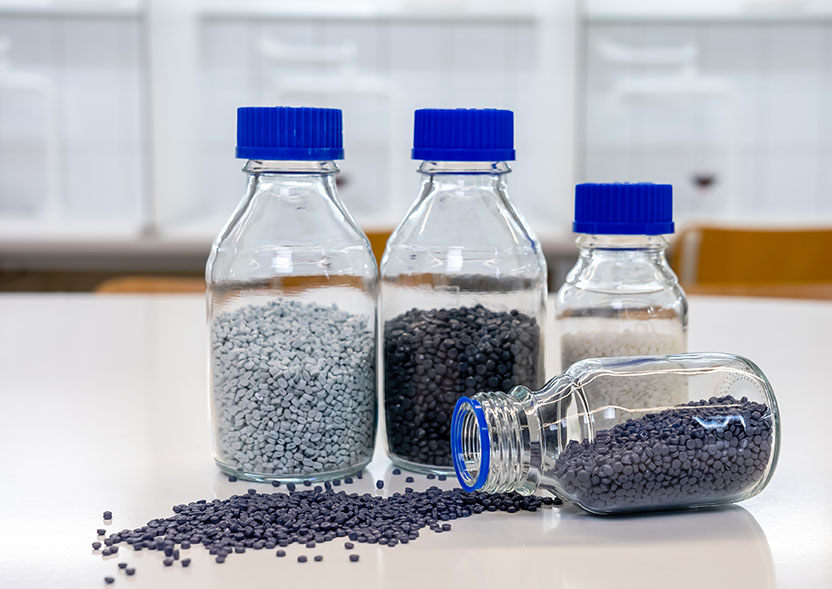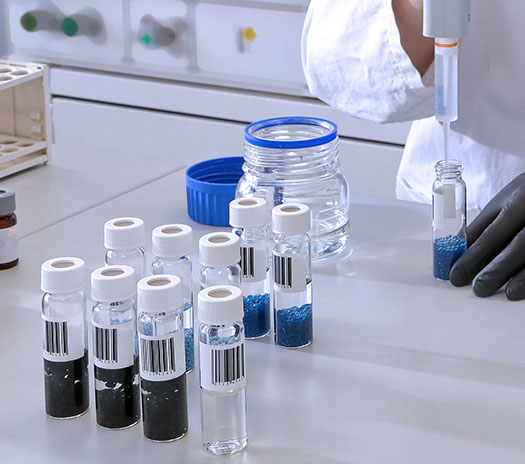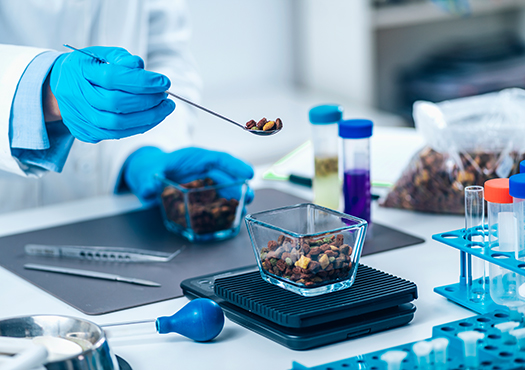
Sensory optimization of raw materials and products

Characterization of odors and their release - cause clarification of unwanted odors
The quality of many everyday products as well as that of raw materials and materials is decisively determined by their sensory properties. If, for example, an unpleasant odour occurs, the combination of human sensory evaluation and the decoding of odour-active substances can provide important information for product optimization.
We carry out qualitative and quantitative analyses to answer questions about the causes, possible negative physiological effects or optimization potential. In doing so, we clarify the potential formation pathways of these volatile compounds and their release from the respective materials. Thanks to our comprehensive knowledge of substance properties, we also develop suitable avoidance and minimization strategies for a wide variety of products and materials. In addition, the use of modern sensor technologies enables us to make odors digitally detectable. With the “development of application-specific sensor systems” and the “use of algorithms”, we specialize in the translation of perceptual impressions into machine systems and the development of intelligent sensor technologies. We combine our many years of expertise in the field of analytical sensor technology with new innovative technological methods in order to offer our customers faster and more cost-effective solutions.
We provide you with comprehensive support in the characterization of odours and in determining the causes of unpleasant odours and their release using real-time emission analysis.
Get in touch with us!
Ways to use our odor analysis services
Our research and development methods can be applied to any raw material or product across a variety of categories. Here is an overview of potential ways you can use our odor analysis services.
Odor analysis of plastics and recyclates
Packaging, composites, automotive components, materials

The decision on which packaging materials to use is nowadays increasingly determined by factors such as sustainability and resource efficiency. As a result, recyclable products and higher recycling rates are increasingly in demand and recycled plastics are becoming the material of choice. Yet many recyclates — especially recyclates from post-consumer waste — exhibit unwanted odors and therefore often do not meet the required quality level. We characterize these odor-active contaminants and develop customized solutions for odor optimization or minimization.
Our odor optimization services for plastics and recyclates:
- Identification of odor-active substances using chemical-analytical-olfactory tests
- Clarification of the chemical structures underlying the unwanted odors
- Development of customized solutions for odor optimization or minimization
- Real-time monitoring of odor emissions to minimize harmful emissions
- Development of tailor-made measuring systems for process optimization
Bio-based composites
Coatings, cellulose, lignin, starch, paper, cardboard

The application of bio-based composites in everyday items such as toys and paper requires new developments in odor optimization. Particularly when using waste materials from the agricultural or food industry or substituting individual components in the development of bio-based product systems, quality losses in sensory properties may occur. Our extensive method portfolio enables us to evaluate the sensory properties of bio-based materials and products and to identify targeted solutions for their odor optimization.
Our odor optimization services for bio-based composites:
Characterization and optimization of odorants in bio-based materials and products.
- Cause clarification of unwanted odors and clarification of possible formation routes
- Development of targeted methods to avoid or minimize odor-active contaminants
- Real-time emission analysis
Technical auxiliaries
Adhesives, binders, plasticizers, stabilizers, pigments, additives

Technical auxiliaries serve an important role in optimizing production processes and improving the quality and properties of products. In many cases, it is only through the addition of various auxiliaries, such as adhesives, binders or stabilizers, that materials become technically usable. However, even the smallest amounts of such additives can lead to quality losses of the sensory properties of the end product. We identify unwanted odorants and develop targeted avoidance and minimization strategies.
Our odor optimization services for technical auxiliaries:
- Characterizing and optimizing odor-active ingredients
- Cause clarification of unwanted odors, e.g., by comparing formulations
- Clarification of the chemical structures underlying the unwanted odors
- Development of customized avoidance and minimization strategies
- Real-time monitoring of odor emissions to minimize harmful emissions
Odor optimization and analysis for other product groups

Using our analysis methods, we can optimize the sensory properties of many other products and materials, e.g.:
- Food and beverages
- Luxury food
- Pet food
- Personal and home care products
- Raw materials (e.g., fats or fat derivatives)
Insight into our laboratory of gas chromatography
While holding down the mouse, you can use the mouse pointer to move 360° virtually through our laboratory of gas chromatography!
Double click for full screen mode
 Fraunhofer Institute for Process Engineering and Packaging IVV
Fraunhofer Institute for Process Engineering and Packaging IVV